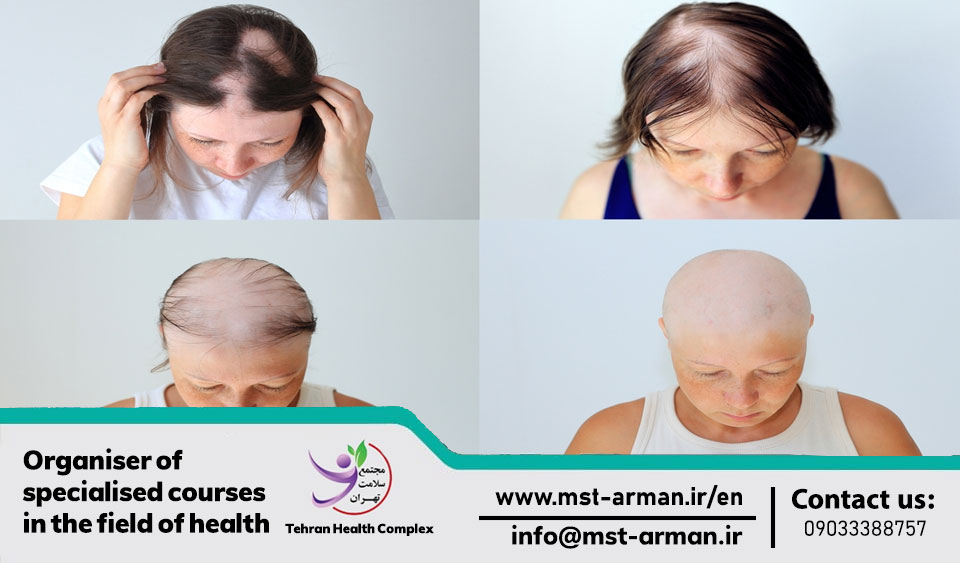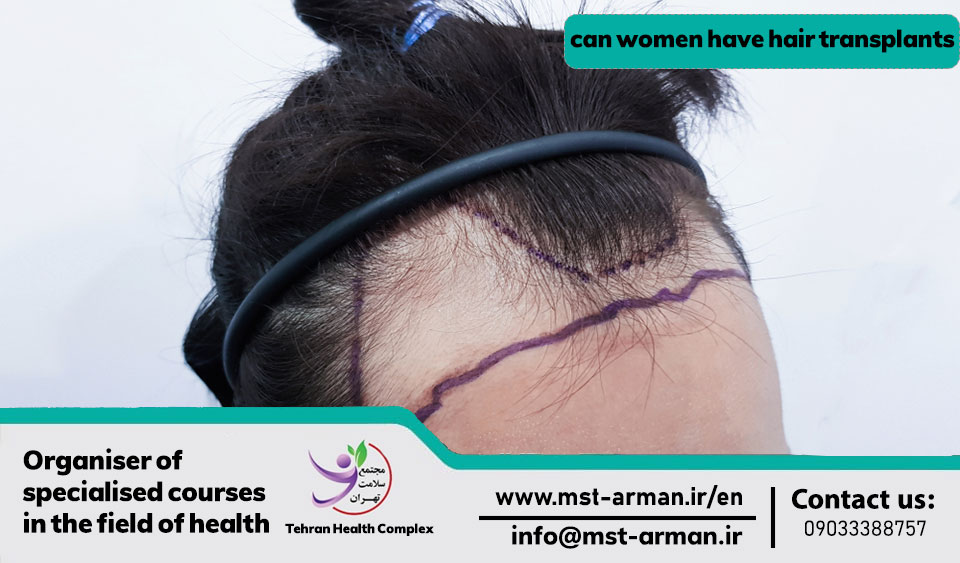Ladies, gather around and let’s delve into a topic that is sometimes overlooked but holds immense significance for many of us, the topic is hair transplant for women. You may have heard of this procedure being predominantly associated with men, but let’s break that stereotype right here. Those interested in the hair transplantation course can register now.
Hair loss can affect women just as much as men, and it’s time we shed some light on the options available to us. Whether it’s due to genetics, hormonal changes or other factors, hair loss can be emotionally challenging for women. Thankfully, hair transplants offer a glimmer of hope, providing a natural and lasting solution to restore our luscious locks.
So, let’s dive into the world of female hair transplant, exploring the techniques, benefits, and the incredible transformations that can be achieved. It’s time to reclaim our confidence and embrace the possibility of regaining thick, beautiful hair. So can women have hair transplants?
causes of female hair loss
- Hormonal Changes: Hormonal imbalances, such as those caused by pregnancy, childbirth, menopause, or conditions like polycystic ovary syndrome (PCOS), can lead to hair loss in women. Fluctuations in hormone levels can affect the hair growth cycle and result in thinning or shedding of hair.
- Genetics: Female pattern hair loss, also known as androgenetic alopecia, can be inherited from either side of the family. This type of hair loss typically occurs gradually and is characterized by thinning of hair on the top of the head.
- Medical Conditions: Certain medical conditions can contribute to hair loss in women. These include thyroid disorders (hypothyroidism or hyperthyroidism), autoimmune diseases (such as alopecia areata), scalp infections, and conditions that cause scarring of the scalp.
- Stress and Emotional Factors: Emotional or physical stress, including traumatic events, major surgeries, or chronic illness, can disrupt the hair growth cycle and lead to temporary hair loss known as telogen effluvium. Emotional stress can also contribute to conditions like trichotillomania, where individuals have an irresistible urge to pull out their hair.
- Nutritional Deficiencies: Inadequate intake of essential nutrients, such as iron, zinc, vitamin D, and vitamin B12, can impact hair health and contribute to hair loss in women. Poor diet, eating disorders, or certain medical conditions that affect nutrient absorption can lead to nutritional deficiencies.
- Hairstyling Practices and Hair Treatments: Overuse of harsh hair treatments, such as chemical relaxers, hair dyes, and excessive heat styling, can damage the hair follicles and lead to hair loss. Hairstyles that pull tightly on the hair, like tight braids or ponytails, can cause a condition called traction alopecia.
- Medications and Medical Treatments: Certain medications, such as those used for cancer (chemotherapy), blood pressure, hormonal birth control, and antidepressants, can cause hair loss as a side effect.
Stages of hair loss in women

hair loss for women
Before knowing that can women have hair transplant first let see, how many stages are for hair loss in women? Hair loss in women can progress through different stages. The stages of hair loss in women are typically classified using the Ludwig Classification System. Here are the three stages:
- Mild Hair Loss :there is minimal hair loss or thinning at the crown of the head (top of the scalp). The hair part may appear wider than usual, but the overall hairline remains intact.
- Moderate Hair Loss: the hair loss becomes more noticeable and starts to spread to other areas of the scalp. The hair thinning at the crown becomes more prominent, and the hair parting becomes wider. However, the front hairline typically remains unaffected.
- Extensive Hair Loss: the most advanced stage of hair loss in women. At this stage, there is significant hair thinning and loss throughout the crown and top of the scalp. The hairline at the front may also start receding, and the scalp may become more visible.
It’s important to note that the Ludwig Classification System is a general guideline and may not capture all variations of hair loss in women. The specific pattern and progression of hair loss can vary among individuals. It’s advisable to consult with a healthcare professional or a dermatologist for an accurate diagnosis and appropriate treatment options based on your specific situation.
can women have hair transplants ?
can women have hair transplants ? Yes, women can undergo hair transplant procedures. Hair transplantation is not limited to men and can be a viable option for women experiencing hair loss. However, the suitability of hair transplant for women depends on various factors, including the underlying cause of hair loss, the extent of hair loss, the quality and availability of donor hair, and the individual’s overall health.
Hair transplant techniques, such as follicular unit transplantation (FUT) and follicular unit extraction (FUE), can be used for women as well. These procedures involve harvesting healthy hair follicles from a donor area (usually the back or sides of the scalp) and transplanting them into the areas affected by hair loss.
Why do men get hair transplants more than women?
you knew that can women have hair transplant or not. Now why do men get hair transplant mor than women? Hair transplants are more commonly associated with men than women for a few reasons:
- Male Pattern Baldness: Male pattern baldness, also known as androgenetic alopecia, is the most common cause of hair loss in men. It typically follows a predictable pattern of hair loss, primarily affecting the frontal hairline and the crown of the head. This pattern of hair loss makes men ideal candidates for hair transplants, as their donor hair from the back and sides of the scalp is often unaffected by the balding process.
- Higher Incidence of Hair Loss: Hair loss is generally more prevalent in men than in women. Male pattern baldness affects a significant percentage of men, while women tend to experience hair loss in a more diffuse manner, with thinning throughout the scalp. The distinct pattern of hair loss in men often prompts them to seek hair restoration solutions like hair transplants more frequently.
- Social Acceptance: Society has historically been more accepting of male hair loss compared to female hair loss. While bald men are often seen as a natural part of aging or even as attractive, women experiencing hair loss may face more societal pressure and stigma. This difference in societal expectations and perceptions may contribute to men being more proactive in seeking hair transplant treatments.
Benefits of hair transplant for women
Hair transplant procedures can offer several benefits for women experiencing hair loss. Here are some of the key benefits of hair transplants for women:
| Benefits of Hair Transplant for Women |
| Restores hairline and density |
| Improves self-confidence |
| Enhances overall appearance |
| Provides a permanent solution |
| Eliminates the need for wigs or hairpieces |
| Allows for styling versatility |
| Boosts emotional well-being |
| Provides natural-looking results |
| Can be customized to individual hair type and texture |
| Offers long-term cost-effectiveness |
| Minimally invasive procedure |
| Quick recovery time |
Last word
As in this article, hair transplant for women was discussed, you realized that hair transplant is possible for women as well as for men, and there will be no obstacle for women to have hair transplant.
Frequently asked questions about hair transplant for women
- Is hair transplant suitable for women?
Yes, hair transplant can be a suitable option for women who are experiencing hair loss or thinning. However, it’s important to consult with a qualified hair transplant specialist to determine if you are a good candidate for the procedure. - How does hair transplant work for women?
Hair transplant for women typically involves harvesting hair follicles from the donor area (usually the back or sides of the scalp) and transplanting them to the areas of thinning or baldness. The transplanted hair follicles continue to grow in their new location, providing natural-looking results. - Is hair transplant a permanent solution for women?
Yes, hair transplant is considered a permanent solution because the transplanted hair follicles are typically resistant to the hormone DHT (dihydrotestosterone), which is responsible for hair loss in androgenetic alopecia. The transplanted hair should continue to grow for a lifetime. - Will the transplanted hair look natural?
When performed by an experienced hair transplant surgeon, the transplanted hair should blend in naturally with your existing hair. The surgeon will consider factors such as hairline design, hair density, and the angle and direction of hair growth to achieve the most natural-looking results.


